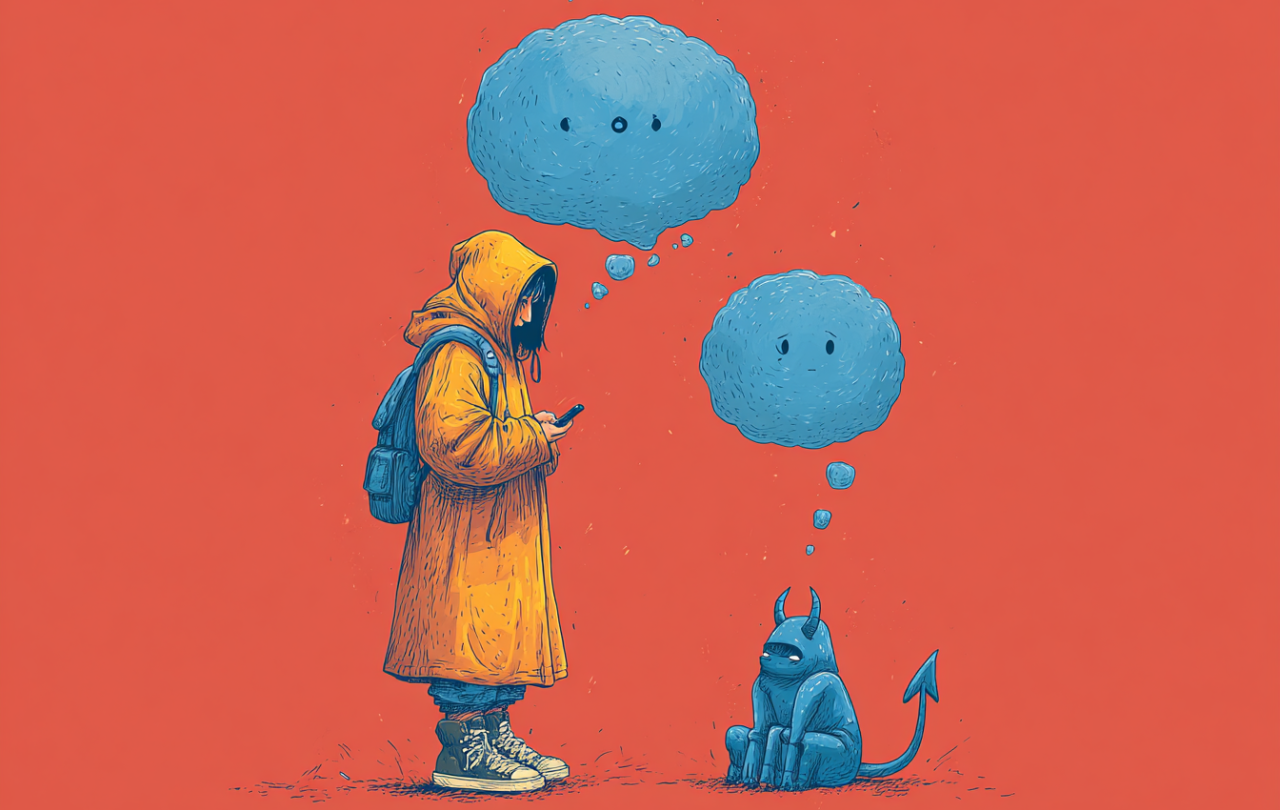AI Chatbots. They’re here to save us, aren’t they? Their designers argue so, fervently. There’s no doubt they are useful. Some, like EpiscoBOT (formerly known as ‘Cathy’), are designed for those asking ‘life’s biggest questions. 'Our girlfriend Scarlett’, is an AI companion who “is always eager to please you in any way imaginable.” So why not defend them?
They offer companionship for the lonely, spark creativity when we run on empty, and make us more productive. They also provide answers for any and every kind of question without hesitation. They are, in short, a refuge. Many chatbots come with names, amplifying our sense of safety. Names define and label things, but they do far more than that. Names foster connection. They can evoke and describe a relationship, allowing us to make intimate connections with the things named. When the “things” in question are AI chatbots, however, we can run into trouble.
According to a study conducted by researchers at Stanford University, chatbots can contribute to “harmful stigma and dangerous responses.” More than this, they can even magnify psychotic symptoms. The more we learn, the more we are beginning to grasp that the much of the world offered by AI chatbots is an illusory one.
Early Christian thinkers had a distinct category for precisely this kind of illusion: the demonic. They understood demons not as red, horned bodies or fiery realms, but as entities with power to fabricate illusions—visions, appearances, and deceptive signs that distorted human perception of reality. Demons also personified pride. As fallen angels, they turned away from truth toward themselves. Their illusions lured humans into sharing that pride—believing false greatness, clinging to false refuge.
Looking back to early Christian approaches to demonology may help us see more clearly what is at stake in adopting without question AI chatbots.
According to early Christian thinkers, demons rarely operated through brute force. Instead, they worked through deception. Athanasius of Alexandria (c. 296–373) was a bishop and theologian who wrote The of Antony. In this, he recounted how the great desert father was plagued by demonic visions—phantoms of wild beasts, apparitions of gold, even false angels of light. The crucial danger was not physical attack but illusion. Demons were understood as beings that manufactured appearances to confuse and mislead. A monk in his cell might see radiant light and hear beautiful voices, but he was to test it carefully, for demons disguise themselves as angels.
Evagrius Ponticus (c. 345–399), a Christian monk, ascetic, and theologian influential in early monastic spirituality, warned that demons insinuated themselves into thought, planting ideas that felt self-generated but in fact led one astray. This notion—that the demonic is most effective when it works through appearances—shaped the entire ascetic project. To resist demons meant to resist their illusions.
Augustine of Hippo (354–430) was a North African bishop and theologian whose writings shaped Western Christianity. In his book The City of God, he argued that pagan religion was largely a vast system of demonic deception. Demons, he argued, produced false miracles, manipulated dreams, and inspired performances in the theatre to ensnare the masses. They trafficked in spectacle, seducing imagination and desire rather than presenting truth.
AI chatbots function in a strikingly similar register. They do not exert power by physical coercion. Instead, they craft illusion. They can produce an authoritative-sounding essay full of falsehoods. They can create images of people doing something that never happened. They can provide companionship that leads to self-harm or even suicide. Like the demonic, the chatbot operates in the register of vision, sound, and thought. It produces appearances that persuade the senses while severing them from reality. The risk is not that the chatbot forces us, but that it deceives us—just like demonic powers.
Using AI chatbots, too, tempts us with illusions of pride. A writer may pass off AI-generated work as their own, for example. The danger here is not simply being deceived but becoming complicit in deception, using illusion to magnify ourselves. Early Christian theologians like Athanasius, Evagrius and Augustine, warned that pride was the surest sign of demonic influence. To the extent that AI tempts us toward inflated images of ourselves, it participates in the same pattern.
When it comes to AI chatbots, we need a discipline of discernment—testing whether the images and texts bear the marks of truth or deception. Just as monks could not trust every appearance of light, we cannot trust every image or every confident paragraph produced by the chatbots. We need criteria of verification and communities of discernment to avoid mistaking illusion for reality.
Help is at hand.
Through the ages, Christians have responded to demonic illusions, not with naïve credulity nor blanket rejection of the sensory world, but through the hard work of discernment: testing appearances, cultivating disciplines of resistance, and orienting desire toward truth.
The Life of Antony describes how the monk confronted demonic illusions with ascetic discipline. When confronted by visions of treasure, Antony refused to be moved by desire. When assailed by apparitions, he remained in prayer. He tested visions by their effects: truthful visions produced humility, peace, and clarity, while demonic illusions provoked pride, disturbance, and confusion. We can cultivate a way of life that does the same. Resisting the illusions may require forms of asceticism: fasting from chatbots and cultivating patience in verification.
Chatbot illusions are not necessarily demonic in themselves. The key is whether the illusion points beyond itself toward truth and reality, or whether it traps us in deception.






